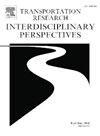基于系统动力学模拟的印尼电动摩托车市场补贴政策情景分析
IF 3.8
Q2 TRANSPORTATION
Transportation Research Interdisciplinary Perspectives
Pub Date : 2025-06-20
DOI:10.1016/j.trip.2025.101487
引用次数: 0
摘要
印度尼西亚拥有超过1.3亿辆摩托车,在向电动交通过渡以履行其在《巴黎协定》下的碳减排承诺方面面临着重大挑战。尽管现有的政府激励和补贴,电动摩托车(EM)的采用率仍然非常低,仅占2030年1300万辆目标的0.18%。本研究旨在评估当前新兴市场补贴和激励政策的有效性,并确定实现2030年目标的合适策略。它将PTTMAM模型(一种系统动力学(SD)模型)应用于印度尼西亚的新兴市场环境,该模型捕获了四个市场代理(用户、制造商、基础设施提供商和政府)之间的复杂交互。它还通过将生活方式和对未来趋势的认识等行为变量纳入模型中,丰富了考虑意愿(WTC)框架。利用2013-2023年的历史数据,通过敏感性分析和极端案例分析对模型进行了校准和验证。构建了涉及市场主体的72种补贴和激励政策情景,以评估当前政策的效果,并确定实现政府目标的最优策略。情景模拟结果显示,目前的政策是不够的,预计2030年目标仅能实现15.9%。更积极的干预措施,包括延长补贴、碳税和电力激励措施,可能使到2033年实现目标成为可能。因此,现有的2030年目标似乎过于雄心勃勃,缺乏战略调整。这项研究强调了政策重新设计的必要性,并提供了一个强大的、基于行为的可持续发展框架,以指导印度尼西亚的电动交通转型。本文章由计算机程序翻译,如有差异,请以英文原文为准。
Scenario analysis of subsidy policies on electric motorcycle market in Indonesia using system dynamics simulation
With over 130 million motorcycles, Indonesia faces a critical challenge in transitioning to electric mobility to meet its carbon emission reduction commitments under the Paris Agreement. Despite the existing government incentives and subsidies, the adoption of electric motorcycles (EM) remains critically low, only 0.18% of the 13 million units targeted by 2030. This study aims to evaluate the effectiveness of current EM subsidy and incentive policies and to determine the suitable strategies for achieving the 2030 target. It adapts PTTMAM model, a system dynamics (SD) model that captures the complex interactions among four market agents: users, manufacturers, infrastructure providers, and government, to the context of EM in Indonesia. It also enriches the willingness to consider (WTC) framework within the model by incorporating behavioral variables such as lifestyle and awareness of future trends. The model is calibrated and validated using historical data (2013–2023) through sensitivity and extreme case analysis. A total of 72 subsidy and incentive policy scenarios involving the market agents were constructed to assess the achievement of current policies and identify optimal strategies to reach government’s target. Simulation results of the scenarios reveal that current policies are insufficient, projecting only 15.9% achievement of the 2030 target. More aggressive interventions, including extended subsidies, carbon taxes, and electricity incentives, could enable reaching the target by 2033. Hence, the existing 2030 goal appears overly ambitious without strategic adjustments. This study underscores the need for policy redesign and offers a robust, behaviorally informed SD framework to guide Indonesia’s electric mobility transition.
求助全文
通过发布文献求助,成功后即可免费获取论文全文。
去求助
来源期刊

Transportation Research Interdisciplinary Perspectives
Engineering-Automotive Engineering
CiteScore
12.90
自引率
0.00%
发文量
185
审稿时长
22 weeks
 求助内容:
求助内容: 应助结果提醒方式:
应助结果提醒方式:


